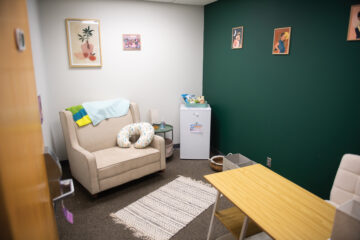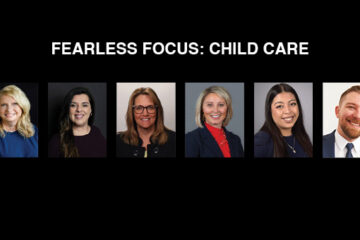Iowa’s lack of child care is a problem for everybody, panelists say

When an Iowa family cannot find suitable child care, it’s bad news for the family. But the ripple effects of that unmet need stretch much further.
Panelists discussing Iowa’s child care crisis emphasized the issue’s broad relevance at an Aug. 24 forum, held at the Science Center of Iowa and organized by the Community Foundation of Greater Des Moines.
“Child care is the most fundamental barrier,” said Deann Cook, president and CEO of the Iowa Women’s Foundation. “Without child care, nothing else matters.”
The Iowa Women’s Foundation has conducted research to better define the scope of the shortfall in Iowa. One of the findings: The state has about 175,000 child care spaces – about 350,000 fewer than the number of young children in Iowa.
Here are five takeaways from the forum:
Inadequate child care is everybody’s problem.
Parents, more often women, leave the workforce because they can’t find quality, affordable and accessible child care. That turnover is undesirable at any time, but recently in Iowa, it contributes to and exacerbates a statewide worker shortage. Even when those departing parents can be replaced, finding and training new workers is an extra cost, in both money and time, for employers. Convincing people to apply for and take open positions is not a matter solely of connecting people outside the workforce with the vacancies; parents won’t take jobs if they can’t ensure their children will thrive while they’re on the job. Local and regional economies suffer because of barriers of cost and availability in child care – Iowa families pay 14% of their income for child care, which is double the rate considered affordable nationally, said Dave Stone, advocacy officer with United Way of Central Iowa.
The pandemic helped lift the veil from the difficulty in finding providers.
The importance of child care was not as obvious before the workplace upheaval caused by COVID-19, panelists said. During various stages of the recovery, it became clear to everybody that the demand for care outstripped the supply, especially outside urban areas. Child care is a business problem, an economic problem and a community problem, Cook argued.
We need to care for the child care workforce.
Money is a problem on the provider side, too. At too many facilities, child care providers make so little that they often leave for better opportunities that often have less stress to boot. While references to a gap in child care spaces can give an impression that physical infrastructure is a problem, it really is largely an issue of staffing and retention in Iowa, panelists said. “If we can support our child care workforce, we will solve a lot of these issues,” Cook said. The Iowa Women’s Foundation said over half of people not currently working in child care who responded to a survey said they would like to return, but only if compensation was better. (Pay rate to come here?)
Innovative ideas are helping to make a dent in Iowa.
Iowa is dotted with success stories of mitigating child care gaps in specific communities. Some businesses set up formal child care on site. Others collaborate with school districts. Manufacturers and other businesses have set up flexible schedules. Although solutions that address specific circumstances in one community or at one business are important, an important next step is figuring out which ideas can be replicated most effectively elsewhere.
Lots of work remains to do, and Iowans can help by speaking out.
Movement toward a more robust and consistent and healthy child care system has only just begun, the panelists said. Parents who have difficulty finding before- and after-school care should say so, and say it loudly, said Ryan Page, director of child care for the Iowa Department of Health and Human Services. That’s one of the best ways to encourage local and state decision-makers to focus on policies that will make a lasting difference in the child care industry, the outlook for families, and the economy overall.


